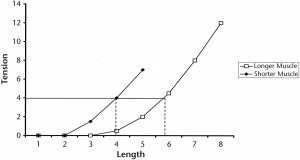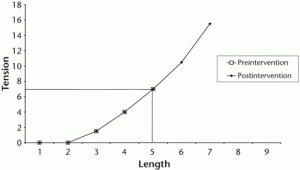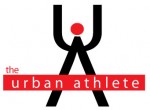Rapid Fire Overview
Most of the ideas are from the work of Magnusson. I have been preaching this research for 15 years and was basically motivated because of self intentions. My flexibility is poor and I never thought that stretching the spine made any sense for low back pain prevention. I went out looking for some support and Magusson (1996) was the king in this area. A recent review is here (its free) He also has great research questioning the utility of eccentric loading protocols for tendinopathy as he prefers heavy resistance training (click here). I have a quick post here inspired by his work related to high hamstring tendon pain.
- stretching as we practice it probably does not lengthen muscle in the long term
- changes in stiffness (i.e. the amount of force it takes to stretch a muscle) do occur with short term stretching (e.g right after you stretch or warm up) but do not occur with long term stretching
- changes in the short term range of motion and decreasing stiffness we experience are probably due to viscoelastic changes in the muscle
- you will have a greater range of motion after you stretch for a bunch of weeks BUT this does not mean the muscle is less stiff or longer. Rather, that muscle (more accurately your nervous system/brain) has increased its stretch tolerance. Your brain and nerves just let you move further.
More details and some thoughts
- Muscles decrease stiffness during a short term bout of stretching. True. This means for a given amount of force your hamstrings will be able to move a little farther. This is what happens when you warm up, stretch and work the kinks out. You can see this in a shift of the stress strain curve to the right. Chart below.
- the change in the range of motion seen with prolonged stretching is a result of an increase stretch tolerance. We don’t actually see a shift in the stress/strain curve. The muscle is no less stiff after stretching rather it can just lengthen more. See the chart below.
Why this sho uld make sense to you.
uld make sense to you.
Imagine a beautiful young ballerina. Consider the range of motion that she would possess in her hamstrings. No doubt extensive. Now picture the back of her thighs…taut, lithe, responsive and strong (if you pictured the picture on the left, what is wrong with you?). Would you agree that this athlete has tremendous range of motion in her hamstrings yet wonderful “tone” or “tightness’ when standing at rest. If she is just standing would I be able to walk up, grab her hamstrings and jiggle them back and forth like some loose harp string? No way. There is still stiffness at short ranges. Stretching does not change stiffness. It does not loosen muscles. If it did we would buckle at rest and be soft, loose messes.
But why do the athletes report feeling tight and stiff? That is another post here (and all opinion by the way)
Quick Summary
I started with the summary, scroll up.






[...] stretching on changing long term muscle stiffness and therefore resting length. See a brief post here on stretching and [...]
It’s refreshing to see someone who understands stretching is primarily a neural phenomenon. I argued the same point (link), but I fear it may take a long while before people catch on.
http://www.t-nation.com/readArticle.do?id=5152564
Hey Greg, I love what you’re doing with your blog. You’re an intelligent dude. Here’s my spin on stretching (I am quite passionate about the subject);
For me, and of course this is more conjecture, in its most basic form, stretching is a natural and instinctive activity; it is performed by humans and many animals. Stretching often occurs instinctively after waking from sleep, after long periods of inactivity, or after exiting confined spaces and areas. When I hear the arguments on whether to stretch or not to stretch, I feel like it’s trying to prove whether we really need to drink water or whether we really need to exercise. It’s a natural, instinctive activity and I can only speak from personal experience the benefits I notice with stretching.
There are many factors and reasons for reduced joint ROM only one of which is muscular tightness. Muscle “tightness” results from an increase in tension from active or passive mechanisms. Passively, muscles can become shortened through postural adaptation, disuse or scarring; actively, muscles can become shorter due to spasm or contraction.
I believe not all stretching is created equal and tend to find those techniques that include a fascial component more effective.
I think that whether it is true or not that stretching is purely short-term, I don’t see this as a reason not to stretch tight muscles. We’re such needy beings and need to keep eating, sleeping, drinking water (etc), and for me the same seems to apply with some sort of stretching. The hydration we experience from drinking water is relatively short term too, we need to keep it up everyday.
Stretching may not affect muscle soreness but I personally believe it helps with the recovery process, just the same way that massage and contast baths are recommended for sports recovery as they alter blood flow to the muscles and help remove accumulated waste products.
Whether or not the stretching actually lengthens the muscle for me is not important, it is the way I feel after the stretching (perhaps purely due to moving energy/blood around the body) that I cannot ignore. When I stretch, I generally stretch a couple of chronically tight muscles pre-workout, sometimes more statically sometimes more dynamically, and keep my main stretching sessions separate from my workouts.
That was way more than I thought I would offer but I enjoyed your post and wanted to share some thoughts. Keep it up!
Thanks Michelle,
I appreciate you taking the time. I’m not anti-stretching for the majority of individuals or muscles. So with your situation I would say that you have a good justification to keep stretching. I am not even anti-stretching pre physical activity which seems to be such a trend nowadays. I guess what I question most is the idea of stretching a muscle that is in pain, the idea that every muscle always needs to be stretched and that stretching is necessarily a panacea for many aches and pains.
I support the idea that many people do benefit from stretching, that there are probably instances when we would not want to stretch (e.g. anterior hip pain that may be because of a torn labrum or changes in the hip capsule) and that there is a lot we don’t know about what stretching does in terms of its mechanism and influence on the body.
I believe that our body has a capacity and range of motion that we should use. Stretching helps us explore these ranges - it does not make sense to me that we would ignore or minimize certain movements. For instance, the neutral spine is a fundamental when it comes to a “stable spine”. The extension of this is that all lumbar flexion, twisting and lateral bending is bad…this makes no sense to me. We have that mobility for a reason (despite what the joint by joint theory inaccurately, IMO, suggests). So what if I bend over to work on a patient’s knee for 30 secnods instead of sticking my ass out into a squat and keeping a neutral spine. What is wrong with bending (e.g stretching my lower back) if my spine is unloaded and it is done infrequently. This is not related to injury, there are no biomechanical studies linking this infrequent posture to dysfunction but would this position would be villified by many phyios and company as bad body mechanics.
Anyways, got off track there. We probably agree a lot, I will often simplify in a blog or even worse not express myself appropriately.
All the best,
Greg
Thanks Greg, I share the same viewpoint for all of those comments! Great post and blog